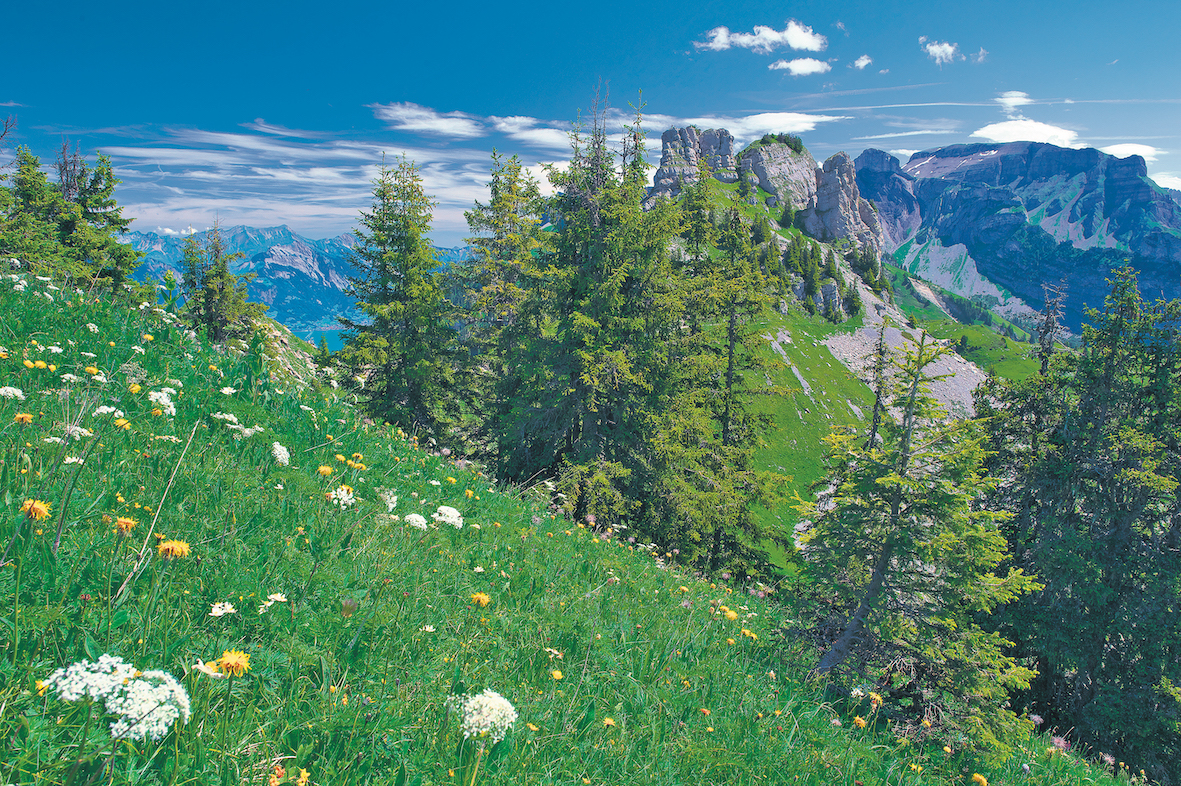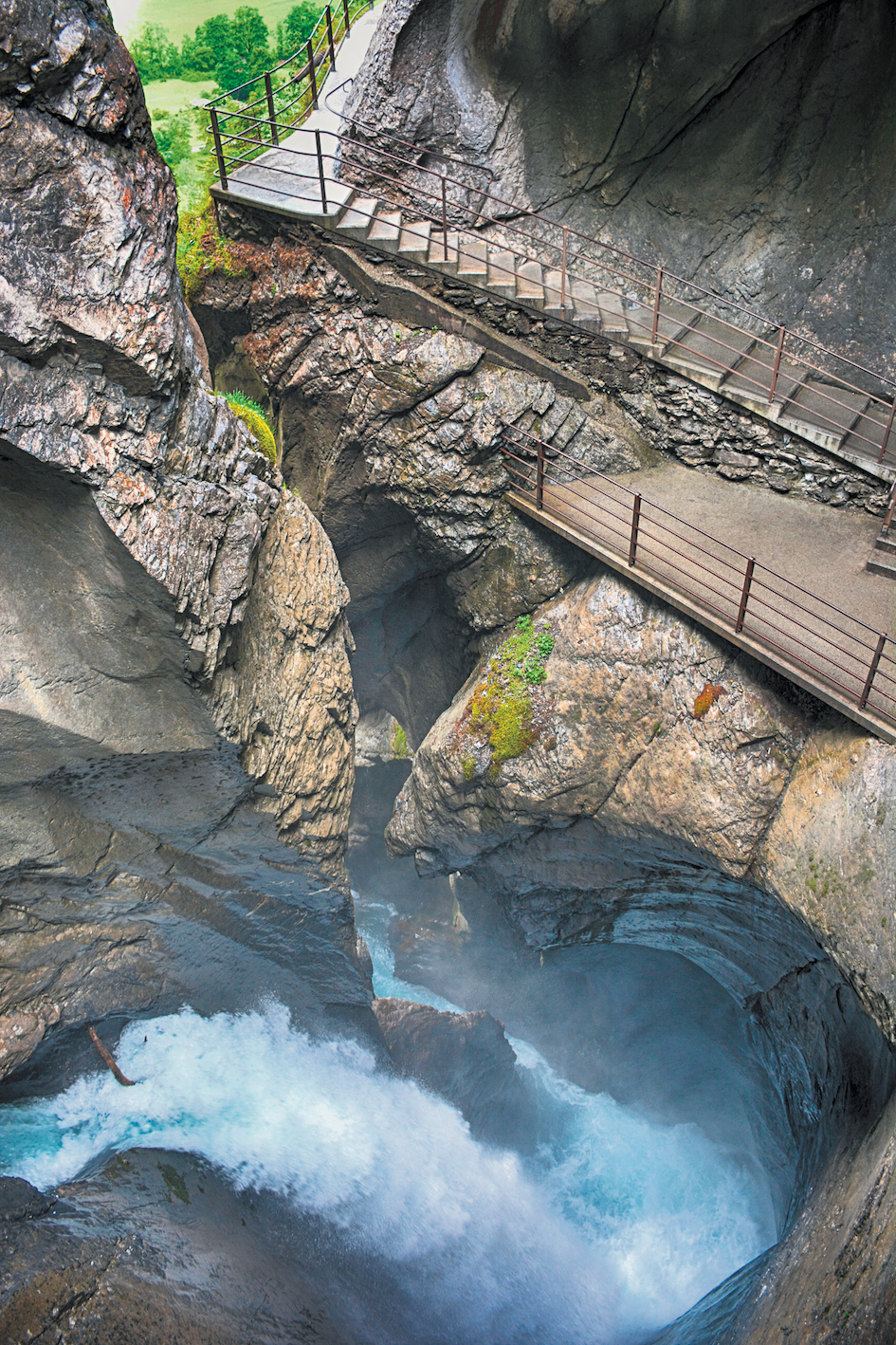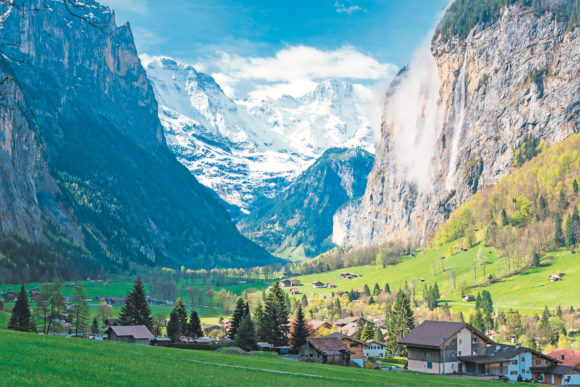Story by Ronnie Juhans
Backpacking during spring and summer breaks is a great way to experience Europe on a budget for many students around the world. Staying at hostels or campgrounds with the ability to prepare your own meals versus expensive hotels allows you to cut down on major expenses and use the extra cash for self-led adventures with the added benefit of meeting other people from a multitude of backgrounds and cultures.
Out of all the years spent trekking around Europe and Asia, backpacking through the Swiss Alpine regions has always been my favorite. To me there is nothing better than arriving in the Bernese Oberland and being welcomed by some of the most amazing scenery, welcoming locals, low-cost accommodation, and the ability to take day trips and go on outdoor adventures.
My favorite start point has always been Interlaken, Switzerland. After arriving by train, there are many hostels and campgrounds within hiking distance from the two main stations. The facilities are above and beyond what most travelers think of a hostel and include ammenities such as communal kitchens stocked with utensils, cookware and appliances, movie rooms, reading and meditation rooms, pools, spas, recreation activities as well as laundry facilities, coffee shops, area information kiosk, and a place to enjoy nightlife.
Within a short walking distance are various outdoor adventure facilities where you can book the adventure of your choice which can be a bit pricy, shop for souvenirs, groceries, or spend the day exploring the village. Instead of spending lots of euro on booking trips and shopping we decided to go low budget and high yield. Below are a couple of suggestions that will make your backpacking adventure an experience of a lifetime.
The Harder Kulm is considered the top of Interlaken. It is over 1,300 meters high with a view overlooking much of the region to include Interlaken, the Thuner See (lake) and Lake Brienz which flank the city below. The ascent upwards is not an easy trek with a large backpack and can be difficult when the trails are wet. There are several resting spots along the way with overlooks equipped with benches and tables to take a break before reaching the top. Once you arrive at the top of the Harder Kulm not only are you taken away by the view of the Jungfrau, Monk, and Eiger peaks, but you can relax and enjoy the views at its high altitude restaurant that offers local food and wine specialties. If you bring the kids along keep in mind that there is also a funicular that takes only 8 minutes to reach the top.
For more information, please visit www.jungfrau.ch
 Sergey Kilin / shutterstock.com
Sergey Kilin / shutterstock.com Schynige Platte (pictured above) was just a few minutes away from our hostel located in Matten, Switzerland. We took the city bus to Wilderswil and the historic cog train up the mountain where there were stunning views of the region in every direction. After about 45-50 minutes we arrived at the top and decided to take the long hike to the village of First. Before hitting the trail we stopped at the LOWA hiking boot center where you can demo their boots for free and return them to a location at the end of your journey. This hike is not for inexperienced hikers or kids. Although it was mid July we stumbled across rocky terrain with patches of ice, and took time out for a snowball fight while crossing some of the meadows at 3,400 feet before stopping at an alpine cabin for a much needed bowl of goulash soup and some pear schnapps. The final descent took us to the village of First four hours later where we made our way back to Interlaken to barbeque, reflect on the journey and plan our next adventure.
For more information, please visit www.jungfrau.ch
 PawelKusek / shutterstock.com
PawelKusek / shutterstock.com Our next adventure was exploring the Lauterbrunnen valley (cover photo), land of 72 waterfalls. This is a totally flat hike that takes you from the train station in the middle of the village towards the Trummelbach Falls. Although you are in a valley, the surrounding views are astonishing. The trail begins at the parking lot behind the church and just below the largest waterfall in the valley. It is surrounded by fields of wildflowers and flanked by high peaks where you will often see base jumpers freefall and fly over the fields in squirrel suits. The sound of cowbells and the glacier-fed swift water in the stream along the route were enchanting enough to make everyone in the group put away their earphones for the entire hike. The photo opportunities are spectacular because you also have a clear view of the snowcapped Jungfrau in the distance. A must-see natural wonder along this trek are the Trummelbach Fall. These waterfalls are the world’s only glacier waterfalls that you can access via an underground lift taking you to a series of tunnels, paths and viewing platforms. The falls are fed from the melting glaciers of the Jungfrau and flow at up to 20,000 liters per second. If you plan on spending the night in the Lauterbrunnen valley, there is a hostel and a campground along the route.
For more information, visit
www.lauterbrunnen.ch
www.myswitzerland.com
For more information on the region:
Accommodation
www.famoushostels.com
www.campingjungfrau.swiss
Ground Transportation
www.jungfrau.ch
Do’s and Don’ts:
- Bring sturdy hiking shoes or boots, all-weather clothing that includes layers, phones, water, snacks, first aid kit, toilet paper, sunscreen, insect repellant and euro. (most remote huts and mountain areas do not accept plastic)
- Take plenty of breaks if you are not used to being in high elevations.
- Check weather conditions as they can change rapidly.
- Stay on the trails to avoid disturbing wildlife and eco systems.
- Don’t leave any trash behind. Find a place in your pack for it.
Featured image credit: pongpinun traisrisilp / shutterstock.com








